Organisational Behaviour Assignment Exploring Unilevers Strategies To Enhance Value Investments
Question
Task: How to perform Organisational Behaviour assignment research that outlines major business strategies and challenges that Unilever used to enhance value investments
Answer
Introduction
The following Organisational Behaviour assignmentis going to explain the major business strategies of Unilever and challenges that are related to people for the ways of commissioning an intervention that will contribute to the enhancement of value investments (van Tulder, 2018).The study also focuses on the support of financial analysis on the observation of data performance supplied by Unilever. Thus, a clear evaluation will be made on the intervention of 4+5, CE-IT, and Value Triad theories with the utilisation of return of investment in talent process with the implication of SWOT and PESTEL.
Describing the Organisational Behaviour
Evaluation on the Role of People in the Business Model and Strategy (Unilever)
The evaluation of the role of people in the business strategy of Unilever constitutes the application of broad differentiation as its main strategy for gaining a competitive advantage in the global market UK. This Organisational Behaviour assignmentfocus on the significance features to make the company and its products stand out against the competitors in the market (Siddique and Sultana, 2018). This company is popular to work for the opportunity and responsibility that influences the changes for society and its ambiance. In brief, the transnational strategy by the company evaluates the role of people for the successful conduct of business strategy for Unilever(Mees-Buss, Welch and Westney, 2019).
According to the views of Laasch and Pinkse (2020), the business model of Unilever is famous for the direct consumer business model that is based on a global value chain that is briefly discussed as a major observation of the customers and the brands that they want to relate to. Majorly, the company’s marketing strategy involves the crafting of the brand for life that can be achieved by the growth of market products in the markets and its share with the increased level of profits (Dmitrievna, 2021). Application of various channels that includes the labelling of products, websites, and consumer leaflets, and so on (Kpoku, 2021).
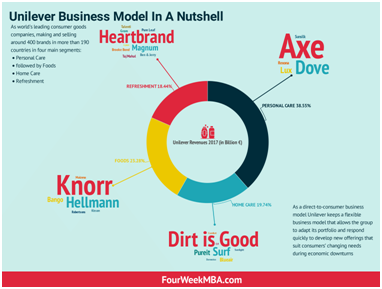
Figure: 1. Business Model and Strategy of Unilever
(Sources: Shi, 2021)
Financial Analysis and Data Performance used for this Organisational Behaviour assignment
The financial data analysis of the Unilever Companyis directly based on the profitability ratios, liquidity ratios, solvency ratios, and asset management of the company’s ratio that are presented to analyse the current financial aspect in the Unilever PLC(Anitah, 2019). This Organisational Behaviour assignment identifies risks are directly associated with the removal of fixed assets and financial resources of the organisation(Lawrence, Rasche,and Kenny, 2019). The decisions of the company are in control of the organisation where the company is trusted to act as the manager’s interest in the shareholder that help to align the manager’s incentives with the shareholders and other stakeholders. They have an interest in the profitability of the company where they can gain huge financial revenues to get the higher prices of share and dividends for the success of the venture.
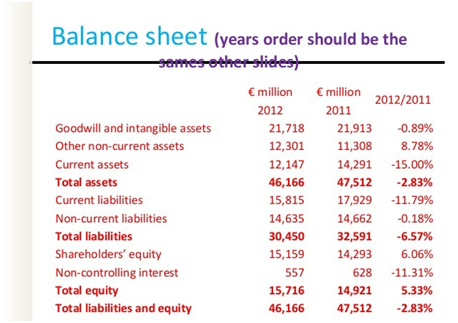
Figure: 2. Financial Analysis of Unilever (UK)
(Sources:Shaikat, 2020)
A Proposed Intervention drawn from the Unilever’s Publications
A business intervention drawn on this Organisational Behaviour assignmentfor Unilever’s publications can be defined a market penetration where the company applies this strategy for the major intensive growth strategy(Tien, 2019). This strategy will also work for the company’s ability to make its products more competitive in the market where this strategy is considered to be more intensive in the global market. This will also lead to the value-improving investment such as in the ways of hiring McKinsey, EY or PwC by the multiplication of the gross by renting a property produced in a year by the multiplier. It is promoted by the competition, increase in the efficiency of economy that will in turn promote the distribution of income across the globe.
Challenges associated with the Interventions of the Company
Some of the challenges that are associated with the interventions of the company are known as building up of the partnerships of a community, promotion of successful recruitment with the retention of participants also to develop a diverse and committed research team with effective support of the information related with the management that involves the archiving of images, collection, and storage of important documents (Edomah, Ndulue and Lemaire, 2021). The Organisational Behaviour assignmentalso identifies major people-related issues in the company (Unilever) can be defined as a lack of proper equipment or facilities, lack of proper training and job aspects with an ineffective recognition of employees and a lack of two-way communication among the employees can be referred to as some of the major problem-related issues in the workplace.
Application of 4+5, CE-IT, and Value Triad to Position the Intervention
These are defined as the consideration for the customer value for the successful positioning of the company as the increase of customer satisfaction leads to a better customer experience of the company. These are based on the views of Fusco Girard and Vecco (2021), the aspects of increase of loyalty, market share, price, and the reduction of errors and increase of efficiency of the company(Martín Sánchez and Schuch, 2020).The success of CFO and CHRO are analysed on the roles of maintaining a transparent communication. These are meant to maintain a promise of the job security in the real sense of competition. The roles of CE-IT and 4+5 involve the collection of invoices in a faster way by reducing the risks of the company.It is also related withthe CFO are meant to oversee the management of the finances of the firm whereas the CHRO oversee the human capital or finances of the firm of the organisation. As per research performed on this Organisational Behaviour assignment, both of them works for IT’s role of financial institutions and corporate development.
Comparative Analysis with the Unilever’s Peers and the ways of Intervention to transform the Company’s Outstanding
The comparative analysis with the firm’s peers and the intervention might make a transform the company’s outstanding (Krick, Brown and Brown, 2019).This has been defined on the aspects of stock, pe ratio, pb ratio and the division yield on the companies of Hindustan Unilever Ltd, Jyothy Labs Ltd, MK Proteins Ltd and Farmax India Ltd.The intervention might make a transformation of the company’s outstanding by the ways of evaluating the existing solutions of business, focusing on the strategies of communication, fostering a sense of urgency and so on.
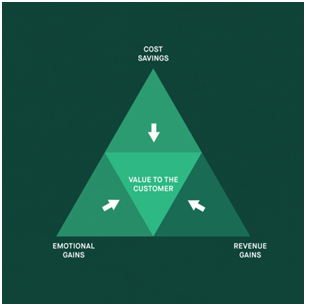
Figure: 3.4+5, CE-IT, and Value Triad
(Sources:Van Hasselt et al., 2018)
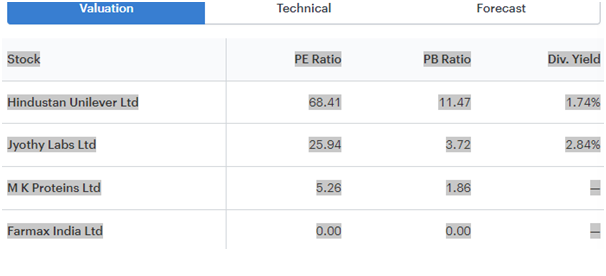
Figure 4: Peers and Comparison of the Unilever Company’s
(Source: Created by Author)
Return of Investment in Talent by the Implications of SWOT and PESTEL Analysis
The return of investment in talent of Unilever by the implications of SWOT and PESTEL analysis are been defined as the company’s major value proposition is considered as the branding with the availability of quality goods and products at a reasonable price for its customers
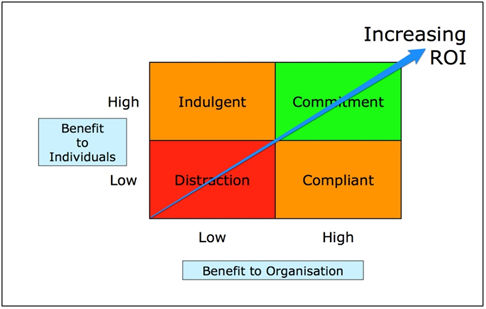
Figure: 4. Return of Investment in Talent
(Sources: Johansson and Thollander, 2018)
SWOT Analysis (Unilever)
|
Strength |
Weaknesses |
Opportunities |
Threats |
|
1) Deeper analysis of portfolios of brands and diversification of products used on this Organisational Behaviour assignment 2)Innovative marketing of products
|
1) Operations and functions in an uber in the competitive market (Zhang and Fan, 2020) 2) There is a level of dominance and raise of the stakes in the space of consumer goods. |
1) Availability of a good record of social and environmental responsibility 2) Emergence of health-conscious customers with the seizing of the market (Chernobay, Yasinskaand Malibroda, 2020).
|
1) Threats from smaller and local markets that provide more value for lesser money. 2) Criticism of the practices of the company to maintain a focus and sustainability of its products.
|
PESTEL Analysis done for this UnileverOrganisational Behaviour assignment
|
Political |
Economical |
Social |
Technological |
Environmental |
Legal |
|
1) Unilever needs to follow the rules of the food and drug administration. 2) Threat of the Trump government makes it the company difficult to sustain. |
1) High chance of growth in the countries like India and China. 2) Possibility of optimising the expense of the company by unemployed people (Kpoku, 2021). |
1) Launch of products makes availability to the social demographics. 2) Good segmentation is important for the company. |
1) Resources must be kept into the R&D division or department 2) Availability of a proper setup and place is required to save the time of the company (Coline, 2021). |
1) Company aims to achieve the goals of the use of 100% plastic packaging to be reusable. 2) Work towards the UN Sustainability Goals. |
1)Ignorance of fake companies for the company’s patents. 2) Customers must be well informed about the rules and regulations. |
Conclusion
The matter of facts that can be concluded from the above-mentioned statement explains the major business strategies of Unilever and challenges that are related to people for the ways of commissioning an intervention that contributes to the enhancement of value investments. The study also focuses on the support of financial analysis on the observation of data performance supplied by Unilever. Thus, a clear evaluation has been concluded on this Organisational Behaviour assignmenton the intervention of 4+5, CE-IT, and Value Triad theories with the utilisation of return of investment in talent process with the implication of SWOT and PESTEL.
Reference List
Anitah, J.N., (2019). Industry 4.0 Technologies and Operational Performance of Fast Moving Consumer Goods Manufacturers in Kenya: a Case Study of Unilever Kenya and L’oreal East Africa (Doctoral dissertation, University of Nairobi). Organisational Behaviour assignmenthttp://erepository.uonbi.ac.ke/bitstream/handle/11295/108749/Anita%20Research%20Project.pdf sequence=1
Chernobay, L., Yasinska, T. and Malibroda, S., (2020). APPLIED ASPECT OF CORPORATE SOCIAL RESPONSIBILITY IMPACT ON COMPANY COMPETITIVENESS (UNILEVER EXAMPLE). Entrepreneurship, 8(1), pp.32-44. http://ep.swu.bg/images/pdfarticles/2020/APPLIED_ASPECT_OF_CORPORATE_SOCIAL_RESPONSIBILITY_IMPACT_ON_COMPANY_COMPETITIVENESS.pdf Coline, D., (2021). Analyse PESTEL-Unilever. Publications Études & Analyses. https://www.etudes-et-analyses.com/marketing/marketing-de-la-distribution/etude-de-cas/analyse-pestel-unilever-626347.html
Dmitrievna, K.K., (2021). Transformation of Business Sustainability Strategies of FMCG Companies in the 21st Century on the Examples of Unilever and L’Oréal. https://dspace.spbu.ru/bitstream/11701/32242/1/MT_Ksenia_Koreneva_GSOM.pdf Fusco Girard, L. and Vecco, M., (2021). The “Intrinsic Value” of Cultural Heritage as Driver for Circular Human-Centered Adaptive Reuse. Sustainability, 13(6), p.3231. https://www.mdpi.com/2071-1050/13/6/3231/pdf Johansson, M.T. and Thollander, P., (2018). A review of barriers to and driving forces for improved energy efficiency in Swedish industry–Recommendations for successful in-house energy management. Renewable and Sustainable Energy Reviews, 82, pp.618-628. https://www.diva-portal.org/smash/get/diva2:1151311/FULLTEXT01.pdf
Kpoku, O.K., (2021). The positive and negative influence of globalization on international business actors’ activity (on materials of Unilever Group) (Doctoral dissertation). http://dspace.puet.edu.ua/bitstream/123456789/11137/1/Obed-Thesis-2020.pdf
Krick, R.L., Brown, A.F. and Brown, K.N., (2019). Increased female athlete triad knowledge following a brief video educational intervention. Journal of nutrition education and behavior, 51(9), pp.1126-1129. https://www.sciencedirect.com/science/article/am/pii/S1499404619308784
Laasch, O. and Pinkse, J., (2020). Explaining the leopards’ spots: Responsibility-embedding in business model artefacts across spaces of institutional complexity. Long Range Planning, 53(4), p.101891. https://www.researchgate.net/profile/Oliver-Laasch/publication/334366870_Explaining_the_leopards'_spots_Responsibility-embedding_in_business_model_artefacts_across_spaces_of_institutional_complexity/links/5d2625e5a6fdcc2462d39eaa/Explaining-the-leopards-spots-Responsibility-embedding-in-business-model-artefacts-across-spaces-of-institutional-complexity.pdf Lawrence, J., Rasche, A. and Kenny, K., (2019). Sustainability as opportunity: Unilever’s sustainable living plan. In Managing Sustainable Business (pp. 435-455). Springer, Dordrecht. http://ndl.ethernet.edu.et/bitstream/123456789/88581/1/2019_Book_ManagingSustainableBusiness.pdf#page=464
Martín Sánchez, V. and Schuch, S., (2020). An Innovation Strategy Towards Circularity in MNCs: The Application of Dynamic Capabilities. https://www.diva-portal.org/smash/get/diva2:1441281/FULLTEXT01.pdf Mees-Buss, J., Welch, C. and Westney, D.E., (2019). What happened to the transnational The emergence of the neo-global corporation. Journal of International Business Studies, 50(9), pp.1513-1543. https://dspace.mit.edu/bitstream/handle/1721.1/128390/41267_2019_253_ReferencePDF.pdfsequence=1&isAllowed=y
Shaikat, M.D., (2020). A case study on the financial outlook of Unilever in terms of stock valuation. http://dspace.bracu.ac.bd/xmlui/bitstream/handle/10361/14476/15304013_BBA.pdf sequence=1
Shi, J., (2021), December. Research on Enterprise Platformization Based on Organizational Structure Reform——Taking SF Express as an example. In 2021 3rd International Conference on Economic Management and Cultural Industry (ICEMCI 2021) (pp. 2198-2202). Atlantis Press. https://www.atlantis-press.com/article/125965988.pdf Siddique, F.B. and Sultana, I., (2018). Unilever Sustainable Living Plan: A Critical Analysis. https://www.researchgate.net/profile/Fahad-Bin-Siddique/publication/324877389_Unilever_Sustainable_Living_Plan_A_Critical_Analysis/links/5ae8cbc7a6fdcc03cd8f7fb3/Unilever-Sustainable-Living-Plan-A-Critical-Analysis.pdf
Van Hasselt, H., Doron, Y., Strub, F., Hessel, M., Sonnerat, N. and Modayil, J., (2018). Deep reinforcement learning and the deadly triad. arXiv preprint arXiv:1812.02648. https://arxiv.org/pdf/1812.02648Organisational Behaviour assignment van Tulder, R., (2018). Business & the Sustainable Development Goals: A framework for effective corporate involvement. Eastmure, E., Cummins, S. and Sparks, L., 2020. Non-market strategy as a framework for exploring commercial involvement in health policy: a primer. Social Science & Medicine, 262, p.113257. https://library.oapen.org/bitstream/handle/20.500.12657/39491/Business_SDGs-framework-effective-corporate-involvement.pdf sequence=1
Zhang, L. and Fan, Z., (2020), November. Analysis of Unilever's Branding and Marketing Strategy in China. In 2020 International Conference on Management, Economy and Law (ICMEL 2020) (pp. 288-291). Atlantis Press. https://www.atlantis-press.com/article/125946177.pdf
Edomah, N., Ndulue, G. and Lemaire, X., (2021). A review of stakeholders and interventions in Nigeria's electricity sector. Heliyon, 7(9), p.e07956. https://www.sciencedirect.com/science/article/pii/S2405844021020594
Tien, N.H., (2019). Comparative Analysis of Multidomestic Strategy of P&G and Unilever Corporation. International Journal of Foreign Trade and International Business, Organisational Behaviour assignment, 1(1), pp.5-8. https://www.researchgate.net/profile/Nguyen-Tien-32/publication/338719379_Comparative_analysis_of_multi-domestic_strategy_of_PG_and_Unilever_Corporation/links/61c843e8d4500608166a984b/Comparative-analysis-of-multi-domestic-strategy-of-P-G-and-Unilever-Corporation.pdf












